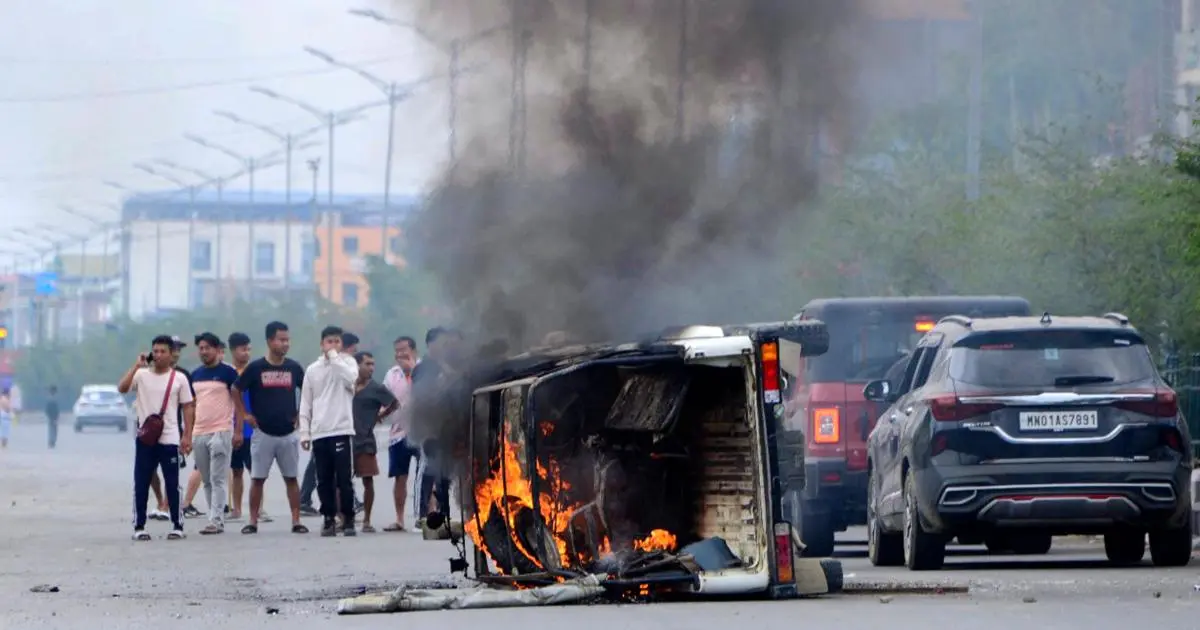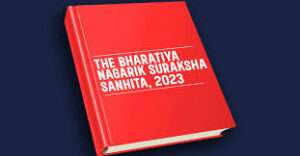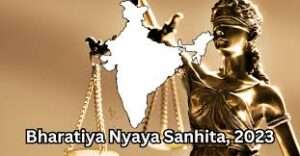
Recent Violent Incidents in Manipur
Over the past fews days, Manipur has been engulfed by a series of distressing events, including violence, arson, and chaos that have spread across districts such as Churachandpur, Imphal East, Imphal West, Bishnupur, Tengnoupal, and Kangpokpi.
Shoot-at-Sight Orders and the Trigger
In an unprecedented and extreme measure, the Manipur government granted district magistrates the authority to issue shoot-at-sight orders. This drastic response was triggered by the eruption of violence on May 3, following a solidarity march organized by the All Tribal Students Union Manipur (ATSUM). The march aimed to protest a Manipur High Court decision urging the inclusion of the Meitei community in the Scheduled Tribes list.
Central Government’s Involvement
As violence escalated, the Central government invoked Article 355 of the Constitution to intervene. This article empowers the Central government to take necessary measures during instances of external aggression or internal disturbances. Consequently, armed forces were deployed to the affected areas, leading to casualties, injuries, and the displacement of thousands.
Root Causes of Conflict
While the immediate cause is the demand for the Meitei community’s inclusion in the ST list, deeper issues underlie the prevailing anger. These issues involve disputes over forest lands in the hills, allegations of persecution faced by the Kuki community, and conflicts over land ownership between tribal and valley communities.
Forest Land and Tribal Land Rights
The government’s attempts to regulate forest lands in the hills have sparked conflicts. These tensions arise from disagreements over land used for poppy cultivation and concerns about encroachments. The government’s stance has fueled resentment within tribal communities, particularly the Kukis.
Land Pressure and Community Resentment
Rising population pressures in tribal villages have led to their expansion into surrounding forest areas. Tribal communities regard these areas as their ancestral lands, although the government disputes these claims. Furthermore, the Meitei community faces restrictions on land ownership in hill regions, intensifying existing tensions.
Government’s Response and Tribal Protests
Despite the Chief Minister’s unwavering response to tribal protests, discontent continues to simmer. Tribal communities and even a BJP MLA have vehemently protested the government’s actions. Evictions, demolitions, and allegations of selective targeting have exacerbated resentment.
Legal Implications: IPC Sections
The ongoing situation raises legal considerations under the Indian Penal Code (IPC):
- Section 153A: This section pertains to promoting enmity between different groups based on various factors and doing acts prejudicial to harmony. The clashes between communities and resulting violence could potentially invoke this section.
- Section 295A: This section deals with deliberate acts intended to outrage religious feelings, which might apply given the sensitive nature of the clashes.
- Section 307: If any act during the clashes has the intent to cause grievous harm to individuals, this section, which deals with attempted murder, could be invoked.
- Section 505: This section is relevant if any statement, rumor, or report with the intent to incite, or which is likely to incite, any class or community to commit an offense is propagated.
Related Supreme Court Cases
- Kesavananda Bharati v. State of Kerala (1973): This landmark case established the doctrine of the basic structure of the Constitution. It could be relevant in evaluating the constitutionality of the shoot-at-sight orders and the extent of executive power in times of unrest.
- Tehseen S. Poonawalla v. Union of India (2018): This case pertains to the validity of Section 144 of the Criminal Procedure Code, which deals with curfew-like situations. It could provide insights into the legality of imposing curfews and restrictions on communication.
- State of Rajasthan v. Union of India (1977): This case is pertinent to understanding the scope of Article 355 and the power of the Central government to intervene in states during internal disturbances.
- Sanjeev Coke Manufacturing Company v. Bharat Coking Coal Ltd. (1983): This case could be relevant in evaluating disputes over land ownership and land use rights in relation to forest areas.
Long-lasting Resolution Needed
Although a semblance of normalcy is returning, the situation remains intricate. Achieving a sustainable resolution that addresses the concerns of all stakeholders—tribal and valley communities—is of utmost importance. Observing the strategies of both the Central and State governments as they navigate this crisis, ensuring adherence to legal frameworks, and incorporating insights from relevant Supreme Court cases is vital in reaching a consensus acceptable to all parties involved.








